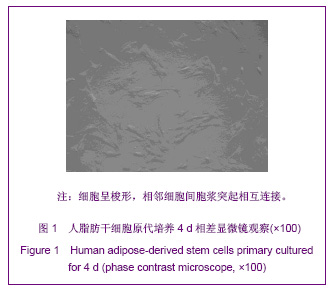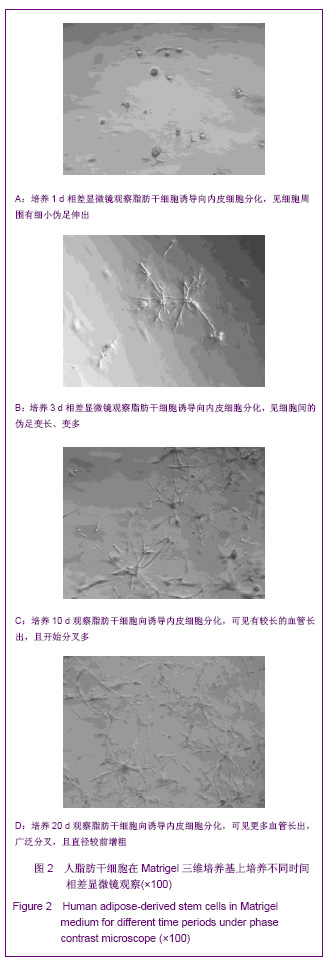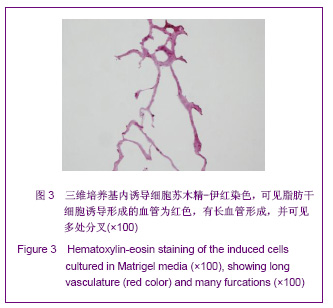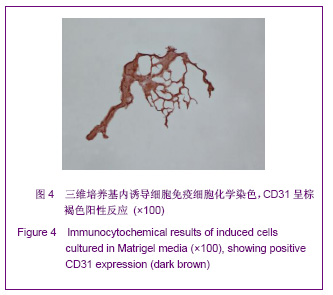| [1] Kern S, Eichler H, Stoeve J, et al. Comparative analysis of mesenchymal stem cells from bone marrow, umbilical cord blood, or adipose tissue. Stem Cells. 2006;24(5):1294-1301.[2] Niemeyer P, Kornacker M, Mehlhorn A, et al. Comparison of immunological properties of bone marrow stromal cells and adipose tissue-derived stem cells before and after osteogenic differentiation in vitro. Tissue Eng. 2007;13(1):111-121.[3] Yamamoto N, Akamatsu H, Hasegawa S, et al. Isolation of multipotent stem cells from mouse adipose tissue. J Dermatol Sci. 2007;48(1):43-52.[4] Bunnell BA, Flaat M, Gagliardi C, et al. Adipose-derived stem cells: isolation, expansion and differentiation. Methods. 2008; 45(2):115-120.[5] Ringe J, Kaps C, Burmester GR, et al. Stem cells for regenerative medicine: advances in the engineering of tissues and organs. Naturwissenschaften. 2002; 89(8):338-351.[6] Fraser JK, Wulur I, Alfonso Z, et al. Fat tissue: an underappreciated source of stem cells for biotechnology. Trends Biotechnol. 2006;24(4):150-154.[7] Han CJ, Yang XQ, Zhang CS. Zhongguo Zuzhi Gongcheng Yanjiu yu Linchuang Kanfu. 2010;14(27):5095-5098. 韩长杰,杨向群,张传森. 脂肪干细胞的免疫学性质[J].中国组织工程研究与临床康复,2010,14(27): 5095-5098.[8] Strem BM, Hicok KC, Zhu M, et al. Multipotential differentiation of adipose tissue-derived stem cells. Keio J Med. 2005; 54(3): 132-141.[9] Kucerova L, Altanerova V, Matuskova M, et al. Adipose tissue-derived human mesenchymal stem cells mediated prodrug cancer gene therapy. Cancer Res.2007; 67(13): 6304-6313.[10] Salem HK, Thiemermann C. Mesenchymal stromal cells: current understanding and clinical status. Stem Cells.2010; 28: 585-596.[11] Chamberlain G, Fox J, Ashton B, et al. Concise review: mesenchymal stem cells: their phenotype, differentiation capacity, immunological features, and potential for homing. Stem Cells. 2007; 25: 2739-2749.[12] Si YL, Zhao YL, Hao HJ et al. MSCs: Biological characteristics, clinical applications and their outstanding concerns. Ageing Res Rev .2011; 10: 93-103.[13] Wang W, Sa YL, Yan XM, et al. Zhonghua Linchuang Yishi Zazhi. 2011; 5(21): 6221-6225. 王伟,撒亚莲,严新民,等.脂肪源性干细胞的定向分化潜能及临床应用前景[J/CD].中华临床医师杂志:电子版,2011,5(21): 6221- 6225.[14] Zhang Y, Zhou Y, Jia LS, et al. Zhonghua Xiaoer Waike Zazhi. 2011; 32(5): 380-383. 张亚,周云,贾立山,等. 脂肪间充质干细胞的体外诱导和成血管作用[J].中华小儿外科杂志 2011, 32(5): 380-383.[15] Ren YZ, Han CX. Zhongguo Zuzhi Gongcheng Yanjiu yu Linchuang Kanfu. 2011; 15(32): 5095-5098. 任逸众,韩长旭.脂肪干细胞的体外诱导与分化[J].中国组织工程研究与临床康复,2011,15(32): 5095-5098.[16] Dai JRabie AB. VEGF: an essential mediator of both angiogenesis and endochondral ossification. J Dent Res. 2007; 86(10): 937-950.[17] Schaffler A, Buchler C. Concise review: adipose tissue-derived stromal cells--basic and clinical implications for novel cell-based therapies. Stem Cells. 2007; 25(4): 818-827.[18] Cao Y,Sun Z, Liao L, et al. Human adipose tissue-derived stem cells differentiate into endothelial cells in vitro and improve postnatal neovascularization in vivo. Biochem Biophys Res Commun. 2005; 332(2): 370-379.[19] Rehman J,Considine RV,Bovenkerk JE,et al.Obesity is associated with increased levels of circulating hepatocyte growth factor. J Am Coll Cardiol. 2003; 41(8): 1408-1413.[20] Rehman J, Traktuev D, Li J, et al. Secretion of angiogenic and antiapoptotic factors by human adipose stromal cells. Circulation. 2004; 109(10): 1292-1298.[21] Planat-Benard V, Silvestre JS, Cousin B, et al. Plasticity of human adipose lineage cells toward endothelial cells: physiological and therapeutic perspectives. Circulation. 2004; 109(5): 656-663.[22] Amos PJ,Shang H,Bailey AM,et al.IFATS collection: The role of human adipose-derived stromal cells in inflammatory microvascular remodeling and evidence of a perivascular phenotype. Stem Cells. 2008; 26(10): 2682-2690. |





.jpg)